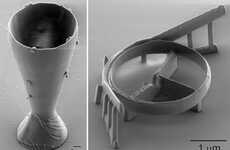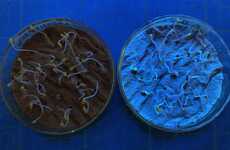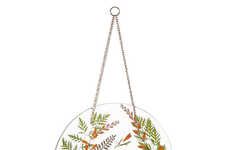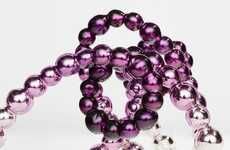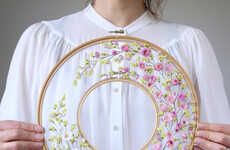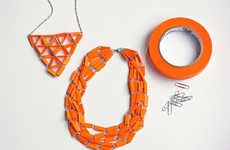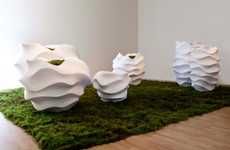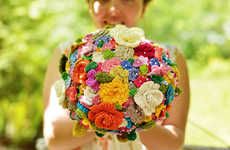
These Microscopic Flowers Beautifully Petite
Jessica Marren — June 4, 2013 — Tech
References: news.discovery
These microscopic flowers are just as beautiful as real flowers that grown in gardens and in fields, but they are smaller than a speck of dust. This project was created by Wim Noorduin, who is a postdoctoral student at Harvard. These tiny blooms are a fraction of the size of the living plants we are accustom to.
Colorful, detailed microscopic flowers are so tiny you wouldn't be able to see them even if they were right in front of you. Only by using a microscope can you visualize Wim Noordium's creation. Wim designed a way to create nano-scaled sculptures of roses, violets and tulips. To give you an idea of how small scale these flowers really are, Discovery news said, "They’re so small that the researchers were able to carpet the steps of the Lincoln Memorial -- the one embossed on the back of a penny -- with thousands of flowers."
Colorful, detailed microscopic flowers are so tiny you wouldn't be able to see them even if they were right in front of you. Only by using a microscope can you visualize Wim Noordium's creation. Wim designed a way to create nano-scaled sculptures of roses, violets and tulips. To give you an idea of how small scale these flowers really are, Discovery news said, "They’re so small that the researchers were able to carpet the steps of the Lincoln Memorial -- the one embossed on the back of a penny -- with thousands of flowers."
Trend Themes
1. Microscopic Floral Sculptures - Creating nanoscaled sculptures of flowers opens up new possibilities for intricate and highly detailed art forms.
2. Nanotechnology in Art - The use of nanotechnology in creating microscopic art pieces like these flowers showcases the potential for innovation at the intersection of science and art.
3. Exploring Size and Scale - The fascination with creating objects on an incredibly small scale challenges traditional notions of what is possible in terms of size and detail.
Industry Implications
1. Art and Design - The field of art and design can leverage nanotechnology and microscopic sculpting techniques to create unique and visually stunning pieces of art.
2. Science and Technology - Advancements in nanotechnology can have broader applications in various scientific fields, including materials science, biology, and engineering.
3. Entertainment and Decor - The use of microscopic floral sculptures can enhance entertainment experiences, such as creating visually engaging sets or adding unique decorations to events and spaces.
4.7
Score
Popularity
Activity
Freshness



